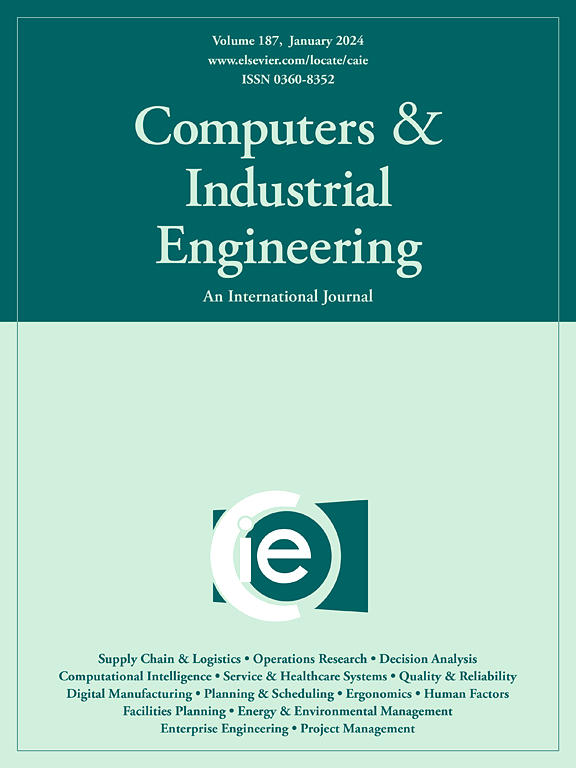基于随机森林学习的EWMA控制图对高维过程的非参数监测
IF 6.7
1区 工程技术
Q1 COMPUTER SCIENCE, INTERDISCIPLINARY APPLICATIONS
引用次数: 0
摘要
多传感器系统已广泛应用于制造过程中,用于感知环境或操作条件和质量信息,收集大量高维质量数据。由于这些系统在实践中非常普遍,因此出现了一个重要的问题,即如何充分利用丰富数据的潜力来监控各种流程。传统的多变量控制图由于其高维性和通常未知的变量先验分布,在高维数据监测领域已不再适用。针对这一需求,本文提出了一种新的非参数指数加权移动平均(EWMA)控制方案,该方案采用随机森林(RF)算法和对数似然法将高维数据转换为一维数据作为监测统计量的输入。仿真结果表明,所提出的控制方案在各种分布和数据类型方面都优于竞争对手,特别是在数据流中只有一个失控(OC)集群。我们还将我们的计划扩展到磁盘监测研究和乳腺癌监测研究的其他病例,证明了拟议计划的稳健性和有效性。本文章由计算机程序翻译,如有差异,请以英文原文为准。
Nonparametric monitoring of high-dimensional processes via EWMA control charts based on random forest learning
Multi-sensor systems have been widely used in manufacturing processes to perceive environmental or operating conditions and quality information, collecting large amounts of high-dimensional quality data. Because these systems are so common in practice, the important question has emerged as to how to leverage the full potential of rich data to monitor the various processes. Most traditional multivariate control charts in the field of high-dimensional data monitoring are no longer relevant because of their high dimensionality and typically unknown prior distribution of variables. In response to this need, this paper proposes a novel nonparametric Exponentially Weighted Moving Average (EWMA) control scheme by employing the random forest (RF) algorithm and log-likelihood method to transform high-dimensional data into one-dimensional data serving as the input of monitoring statistics. The simulation results indicate that the proposed control scheme outperforms its competitors in terms of various distributions and data types, especially for only one out-of-control (OC) cluster in the data stream. We also extend our scheme to the additional cases of a disk monitoring study and a breast cancer monitoring study prove the robustness and effectiveness of the proposed scheme.
求助全文
通过发布文献求助,成功后即可免费获取论文全文。
去求助
来源期刊

Computers & Industrial Engineering
工程技术-工程:工业
CiteScore
12.70
自引率
12.70%
发文量
794
审稿时长
10.6 months
期刊介绍:
Computers & Industrial Engineering (CAIE) is dedicated to researchers, educators, and practitioners in industrial engineering and related fields. Pioneering the integration of computers in research, education, and practice, industrial engineering has evolved to make computers and electronic communication integral to its domain. CAIE publishes original contributions focusing on the development of novel computerized methodologies to address industrial engineering problems. It also highlights the applications of these methodologies to issues within the broader industrial engineering and associated communities. The journal actively encourages submissions that push the boundaries of fundamental theories and concepts in industrial engineering techniques.
 求助内容:
求助内容: 应助结果提醒方式:
应助结果提醒方式:


